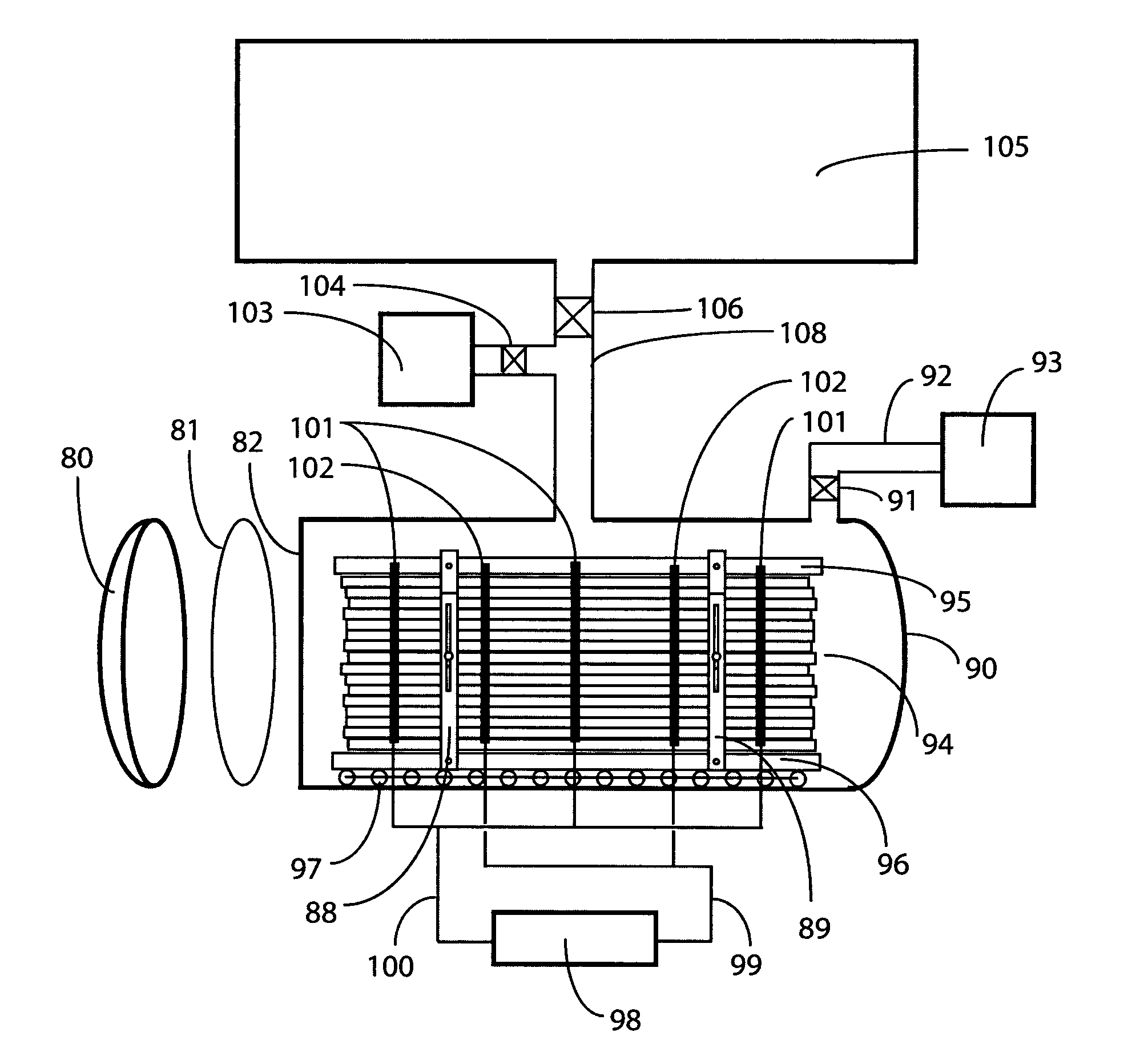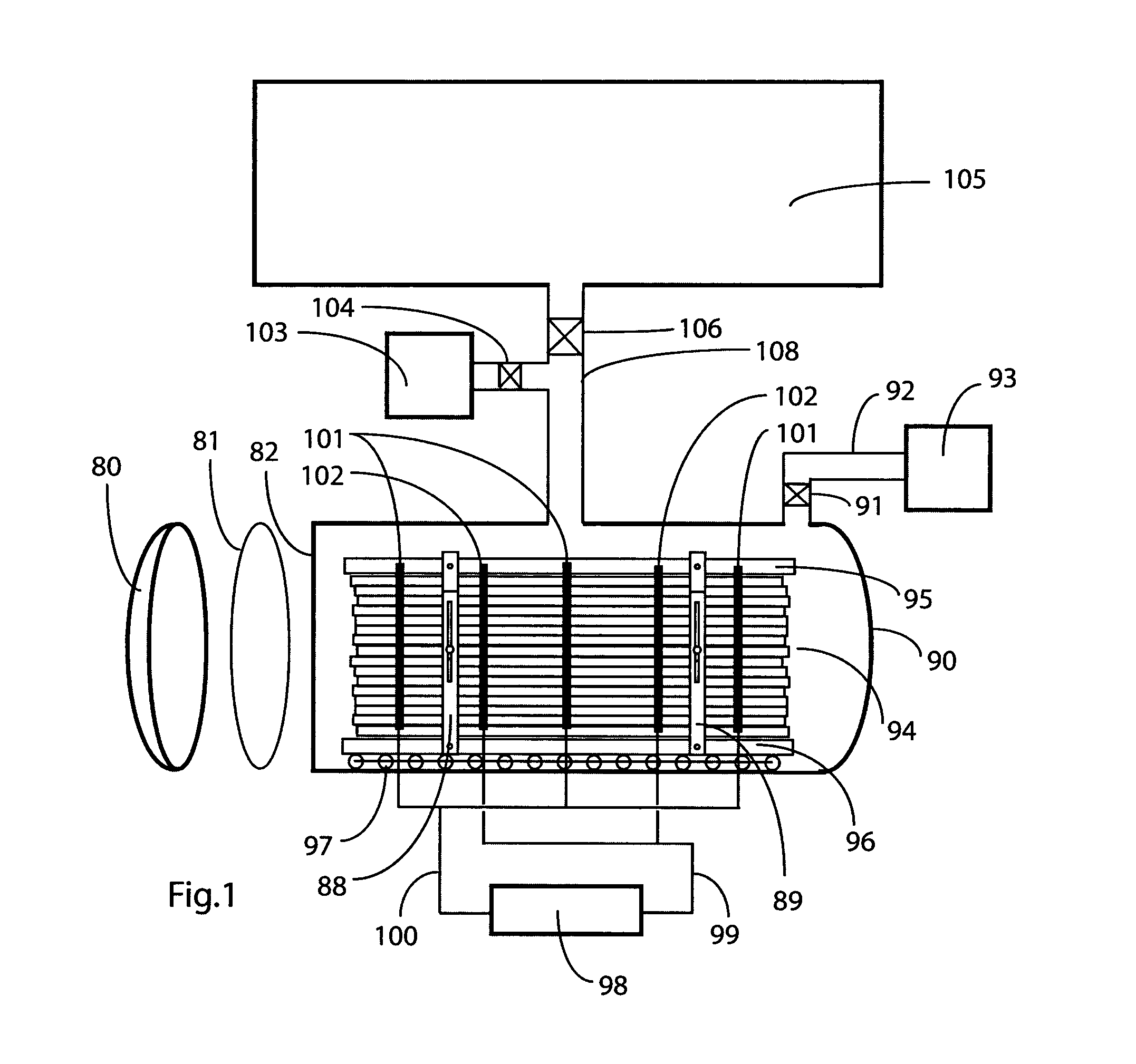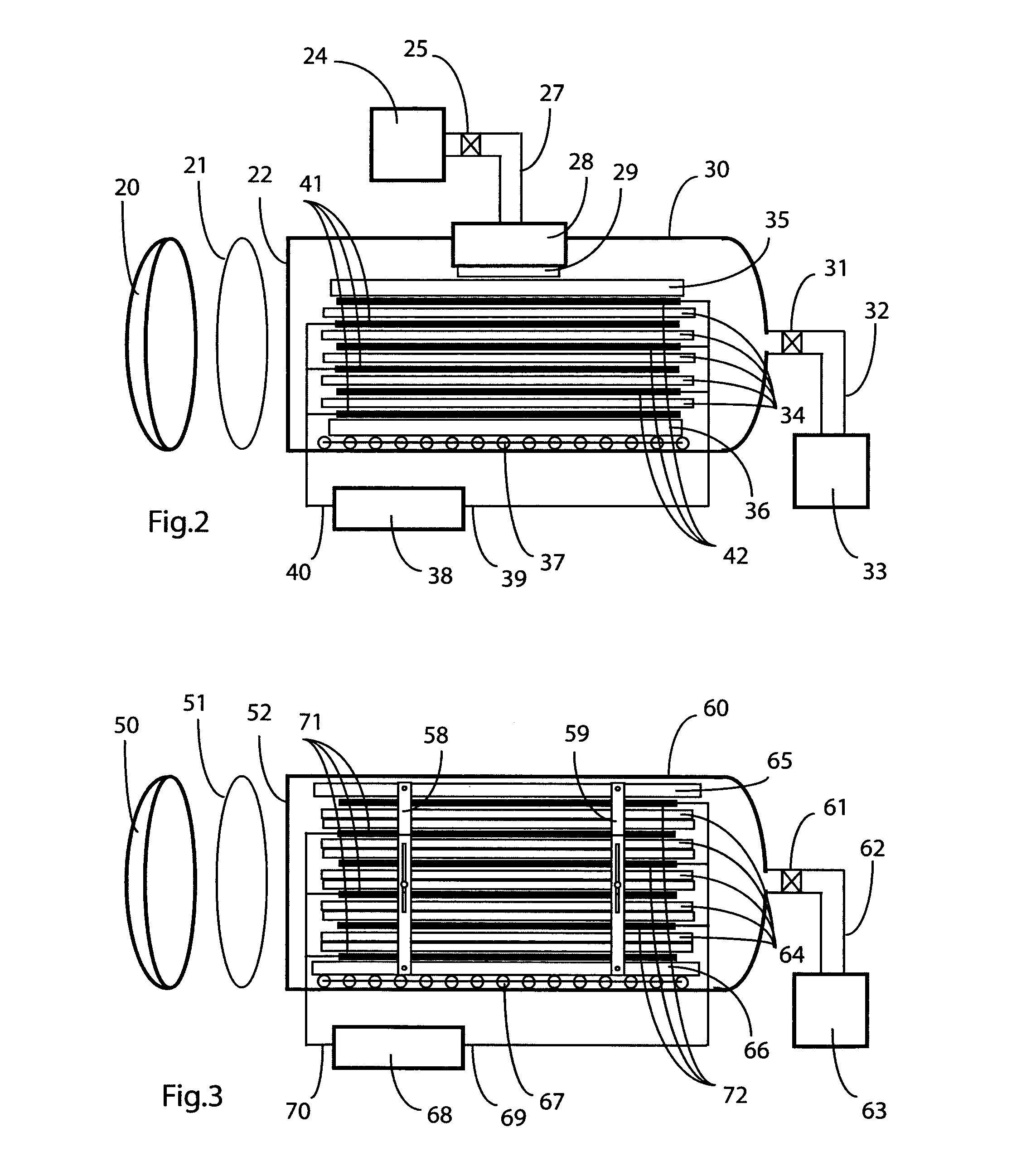Process for treating wood
a technology for wood and fluid treatment, applied in the direction of lighting and heating equipment, coatings, drying, etc., to achieve the effect of shortening the time needed for the process and facilitating heating
- Summary
- Abstract
- Description
- Claims
- Application Information
AI Technical Summary
Benefits of technology
Problems solved by technology
Method used
Image
Examples
Embodiment Construction
[0047]A cross-sectional view of a first arrangement for drying wood according to a presently preferred embodiment of the invention is shown FIG. 1. A batch of stacked wood in the form of boards 94 is placed within a tank 90 through an opening for loading 82. The batch of stacked wood defines an upper flat side against which a flat upper support plate 95 rests. Similarly, the batch of stacked wood defines a lower flat side resting against a flat lower support plate 96. Inside the tank 90 the lower support plate in turn rests on a roller conveyer 97, allowing the batch of wood to slide into the tank 90.
[0048]The tank 90 can be sealed off from the ambient by way of a tank door 80 and an o-ring 81 being placed over the opening for loading 82. An outflow tube 92 connects the airtight tank 90 to pneumatic vacuum pump 93, whereby a vacuum can be established inside the airtight tank 90. An outflow valve 91 is placed in the outflow tube 92 to allow the tank 90 to maintain lower than atmosphe...
PUM
| Property | Measurement | Unit |
|---|---|---|
| Pressure | aaaaa | aaaaa |
| Pressure | aaaaa | aaaaa |
| Pressure | aaaaa | aaaaa |
Abstract
Description
Claims
Application Information
 Login to View More
Login to View More - R&D
- Intellectual Property
- Life Sciences
- Materials
- Tech Scout
- Unparalleled Data Quality
- Higher Quality Content
- 60% Fewer Hallucinations
Browse by: Latest US Patents, China's latest patents, Technical Efficacy Thesaurus, Application Domain, Technology Topic, Popular Technical Reports.
© 2025 PatSnap. All rights reserved.Legal|Privacy policy|Modern Slavery Act Transparency Statement|Sitemap|About US| Contact US: help@patsnap.com



